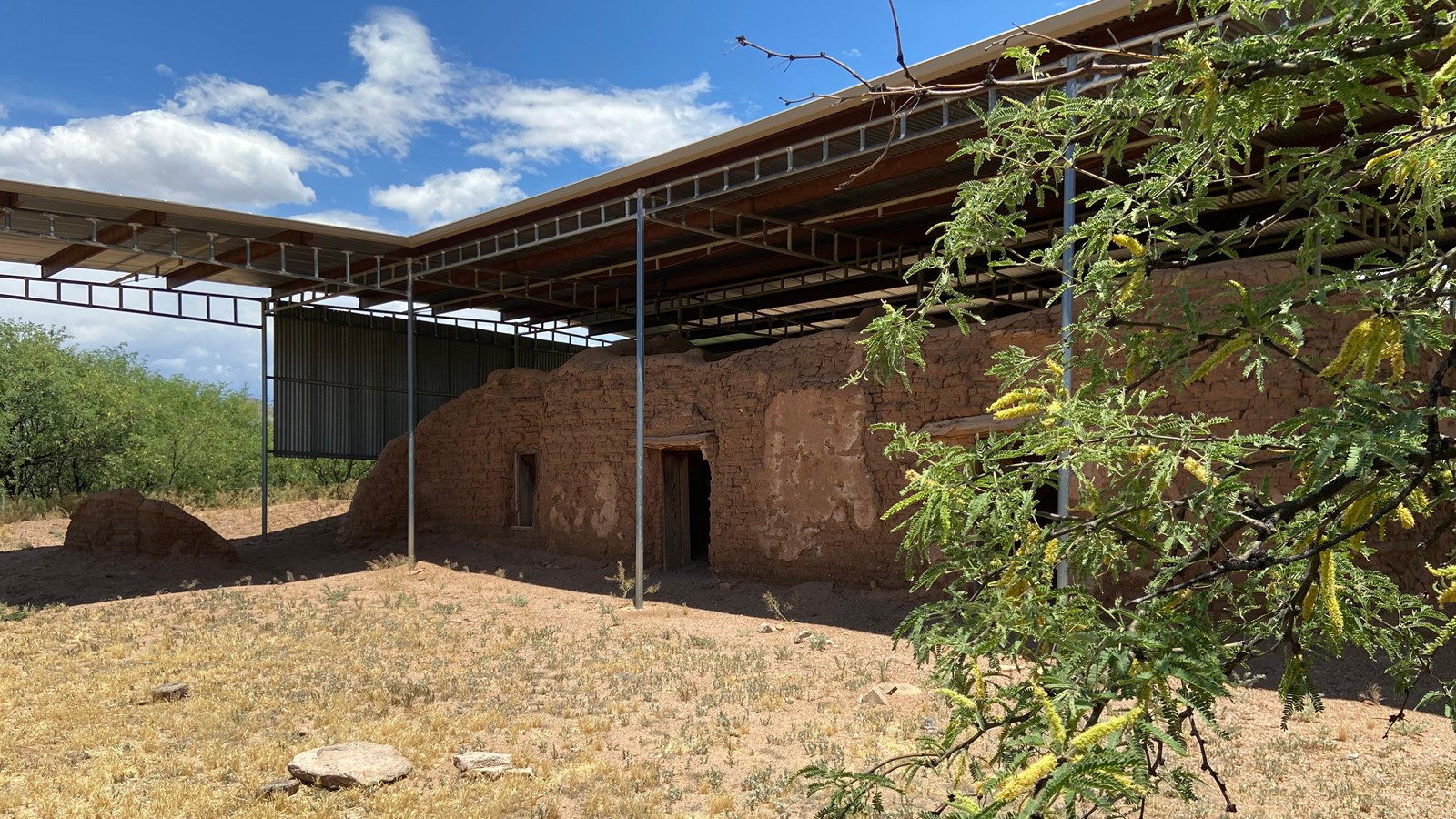Last updated: April 10, 2024
Place
San Cayetano de Calabazas

NPS Photo
The name Calabazas first appears in a baptismal record of June 2, 1756. It was evidently established as a mission earlier that year when Father Francisco Xavier Pauer relocated at least seventy-eight Pimas to the site from their village of Toacuquita, a Spanish rendition of the Pima words "do'ag cugidaga," meaning "peaked mountain." This village was located closer to the Santa Cruz River. When the mission was moved up away from the river, it was given the name "San Cayetano de Calabazas." Calabazas means "squash" or "gourds" in Spanish -- the name may be a reference to the wild "coyote gourds" that grow in the area or to the domestic squash cultivated by the O'odham. Records are scanty, but it is known that construction of the church was half complete in 1761 and was functional by 1773.
Father Antonio de los Reyes on 6 July 1772 submitted a report on the condition of the missions in the Upper and Lower Pimeria Alta. This was his report on San Cayetano de Calabazas as translated by Father Kieran McCarty:
The village of San Cayetano at Calabazas lies two leagues to the east of Guevavi on an open plain with good lands, but the Indians do little or no farming at all. There is no church nor house for the Missionary. According to the Census book, which I have here before me, there are seventeen married couples, four widowers, seven widows, the number of souls in all sixty-four.
On October 17, 1775, Father Pedro Font said mass at Calabazas during the expedition to California led by Juan Bautista de Anza. The church, houses and the granary were set on fire during an Apache attack in 1777. Calabazas was abandoned in 1786 when the last of the O'odham left because of continuing problems with the Apaches.
From 1807 to 1830, it was used as a farm for the Tumacácori mission. In 1808, several non-Indians moved into Calabazas and restored the chapel. But again, the Apaches attacked, set fire to the buildings and carried off the sacred vessels and vestments. In 1844, Calabazas was sold to Manuel Gándara, governor of Sonora. In 1853, Gandara had 6,000 head of stock and converted the church into a ranch house. After the Gadsden Purchase, the ranch house (the old Jesuit church) served a number of purposes -- customs house, post office, and dwelling. Fort Mason was established at Calabazas in 1864 by the California Volunteers. However, 300 of the 400 men got sick with malaria and so the fort was abandoned. By 1878, Calabazas was totally abandoned with only a roofless shell remaining.
In 1960, Father Norman Whalen from Tombstone, Arizona recruited preservation volunteers who capped the walls and laid a cement foundation. The Arizona Historical Society took over site management and ownership in October of 1974. Like Guevavi, Calabazas was added to Tumacácori National Historical Park in 1990. Though Padre Kino never set foot there, the spirit of the master promoter of the Pimeria Alta is certainly present.
Access to Calabazas is restricted to participants on guided tours.
